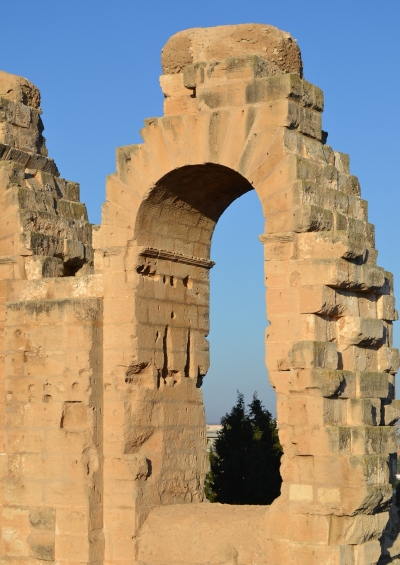Reforming UNESCO’s World Heritage
Cultural and natural heritage is important to all of us. But we are doing ourselves a disservice if we allow national interests to come before quality.
June 27, 2018

The “World Heritage brand” is well-known across the world and World Heritage sites are a popular destination for many tourists.
As the benefits of the designation have become clear, the number of World Heritage sites has also increased greatly. In 1978 there were just 16 World Heritage sites and in 2018 there are an impressive 1,073.
This figure is soon likely to increase even further. New nominations to UNESCO’s World Heritage list are on the agenda when UNESCO’s World Heritage Committee, where Norway is currently a member, meets for the 42nd time in Bahrain 24 June – 4 July.
A site will qualify as World Heritage if it has outstanding universal value and when the nominating country has set up a solid plan for its protection and management. Once it has been inscribed on the World Heritage list it must be protected for the benefit of future generations.
The World Heritage Convention
193 countries have signed UNESCO’s World Heritage Convention which invites participating countries to identify and nominate potential World Heritage sites and to protect and preserve cultural and natural heritage. Overall, the convention and the World Heritage concept have been a great success – perhaps UNESCO’s biggest.
But several challenges come with this success. As the “World Heritage brand” becomes more known, we are seeing an increased politicization of the process where countries push hard to have their nominations accepted.
During the nomination process the site and its protection and management plan are evaluated by experts from the International Council on Monuments and Sites (ICOMOS) and the International Union for the Conservation of Nature (IUCN).
However, there is a worrying trend that their advice is not respected by the World Heritage Committee. In fact, the committee ruled against the experts’ advice in nearly 90% of all cases when it last met in July 2017 and inscribed several sites where the experts found the protection and management plans to be inadequate.
The World Heritage brand
This means that the credibility of the brand is gradually reduced and that the designation of a site to the World Heritage List may become meaningless. Also, this will contribute to the dramatic increase in the number of World Heritage sites.
In 1996, UNESCO had on average $6,900 per World Heritage site to support the conservation and protection. However, in 2018 the sum has been reduced to just $2,008.
This is mainly due to the massive increase in the number of World Heritage sites, which has not been matched by an increase in the financial contribution from the countries that have signed the Convention. The impact of this will be seen in particular in developing countries which may struggle to preserve their unique cultural and natural heritage.
The shortage of funds becomes even more problematic given that there is a considerable geographical disparity when it comes to the location of World Heritage sites. Africa has 102 World Heritage sites while Europe has all of 506 sites.
Italy alone has 53 sites, while Spain has 46 and France has 43. This trend continues – in 2018, 29 out of 32 of the nominations come from high and upper middle-income countries.
Evaluations of each nomination is costly – on average $22,000 – and this cost is borne by the World Heritage fund. Therefore, participating countries contribute towards the fund every year.
Currently, the equivalent of just 1% of Member States’ membership fee to UNESCO is allocated to the World Heritage fund. This translates as a very small amount of money – in many cases just $300 per country.
Increasing contributions
Therefore, countries such as Sweden and Australia have decided to voluntarily increase their contribution.
In the case of Sweden, the contribution was doubled in 2017. Norway is preparing to do the same. Sweden and Norway have also chosen to pay substantial amounts in additional voluntary funding to World Heritage fund. However, the current system means funds are disproportionately used to help affluent countries add yet another World Heritage site to their name.
We call on the World Heritage Committee to revise its administrative procedure so that high and middle income countries, which do not qualify for development assistance according to the criteria set up by the OECD development assistance committee (DAC), finance the evaluations of nominations to the World Heritage list.
This way, the scarce funds of UNESCO’s World Heritage fund would be channeled towards countries that are less able to nominate and thus protect their national sites. This change would allow savings of approximately $638,000.
We also call on all countries that have signed the UNESCO World Heritage Convention to respect the principles of the World Heritage Convention and the advice given by the expert organizations. We especially encourage affluent countries to assist in the protection of cultural and natural heritage across the world by increasing their financial contribution to the World Heritage fund.
Cultural and natural heritage is important to all of us but we are doing ourselves a disservice if we allow national interests to come before quality when it comes to the designations of new World Heritage sites.
Takeaways
As the benefits of the World Heritage designation have become clear, the number of World Heritage sites has increased greatly – from 16 in 1978 to 1,073 in 2018.
As the “World Heritage brand” becomes more known, we are seeing an increased politicization of the process where countries push hard to have their nominations accepted.
There is a considerable geographical disparity when it comes to location of World Heritage sites. Africa has 102 World Heritage sites while Europe has all of 506 sites.
Cultural and natural heritage is important to all of us. But we are doing ourselves a disservice if we allow national interests to come before quality.